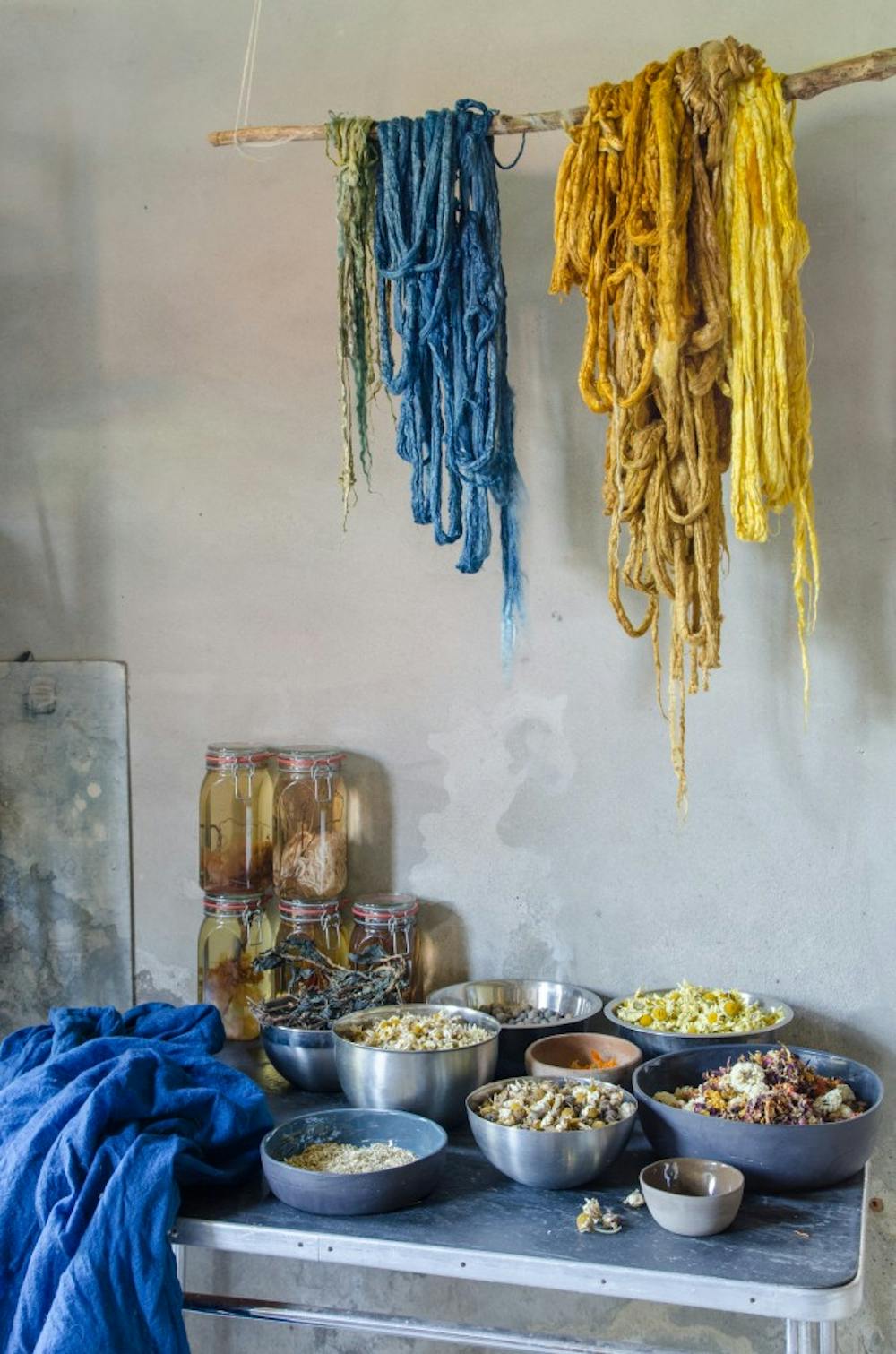Most people studying in Van Pelt's Moelis Family Reading Room never really notice the huge mural on the wall, tossing it a sideways glance without reading the placard posted beside it. But the huge felted wool mural, entitled Field of Transformation, stands nineteen feet wide and sixty feet tall, commanding the entire space.

Dyed wool in Claudy's Studio//Photo by Heleen Haijtema
It doesn’t shy from attention. Rich undulating swirls of vibrant indigo, pale tones, and mellow gold merge in organic abstraction, reminiscent of a child’s dreamscape. This floor–to–ceiling tapestry in wool and raw silk dominates the Moelis Reading Room. Installed in May 2017 with the renovation of Van Pelt Library, Fields of Transformation both beautifies the space and softens ambient noise.
The Dutch artist Claudy Jongstra, the creative force behind the tapestry, told Street about her mesmerizing art and ecological activism.
Claudy Jongstra was originally trained in fashion design. In fact, she stumbled upon her oeuvre, wool felting, by accident. Disenchanted with the “wasteful” world of corporate fashion, she wanted to make sustainable art. “It was so wasteful, producing eight collections a year. I just was encouraging consumer culture.” In 1994, she fell in love with wool by accident after seeing a Mongolian yurt on display at the in the Netherlands. “The material spoke to me. It resists wind, sand, water and lasts for years.”
Fascinated with wool’s strength, softness and flexibility, Claudy dropped fashion and developed her own felting techniques. Refining her technique yielded a remarkable range of elegance and rawness, ethereal softness and rugged texture characterized by a peaceful sort of resilience. Experimentation paid off. She quickly gained commercial success—one of her early projects was working on the fabrics of the Jedi costumes in Star Wars Episode 1, A New Hope.
Now Claudy produces massive installations for public spaces including hospitals, universities like Penn, the Museum of Modern Art in New York City, and most recently the American Embassy in the Netherlands.

Claudy's mural in the US Embassy to The Netherlands//Courtesy of Claudy Jongstra
For Claudy, activism and art are one and the same. Her monumental public installations represent intense abstract expressionism and ecological sustainability. From raw materials to finished product, Claudy controls the entire production process. She keeps a herd of rare Dreathe Heath sheep, the oldest indigenous European breed, at her farm in Friesland in the rural Netherlands. All the pigments in her work are sourced from natural plant dyes grown at the farm. The resulting hues resemble rich masterpieces by Rembrandt and the 17th century Dutch Golden Age painters. Sustainability and beauty are both top–of–mind in Claudy’s artistic process.
For Van Pelt’s Fields of Transformation, Claudy turned to indigo and African marigold for palette inspiration. Working with 20 students, members of Claudy’s studio labored for months on the masterpiece, tightling controlling the entire process from shearing the sheep, carding the wool, dyeing, and felting. Field of Transformation typifies Claudy Jongstra’s mission: it’s a beautiful but functional work of art that not only visually enhances the space but also improves the acoustics of the Moelis Room. Thick felted wool softens ambient noise, creating a serene study space that definitely beats clambering for a GSR.
Check out Claudy’s latest project in September for New York Climate Week. The traveling installation will be on tour for the next two years.

